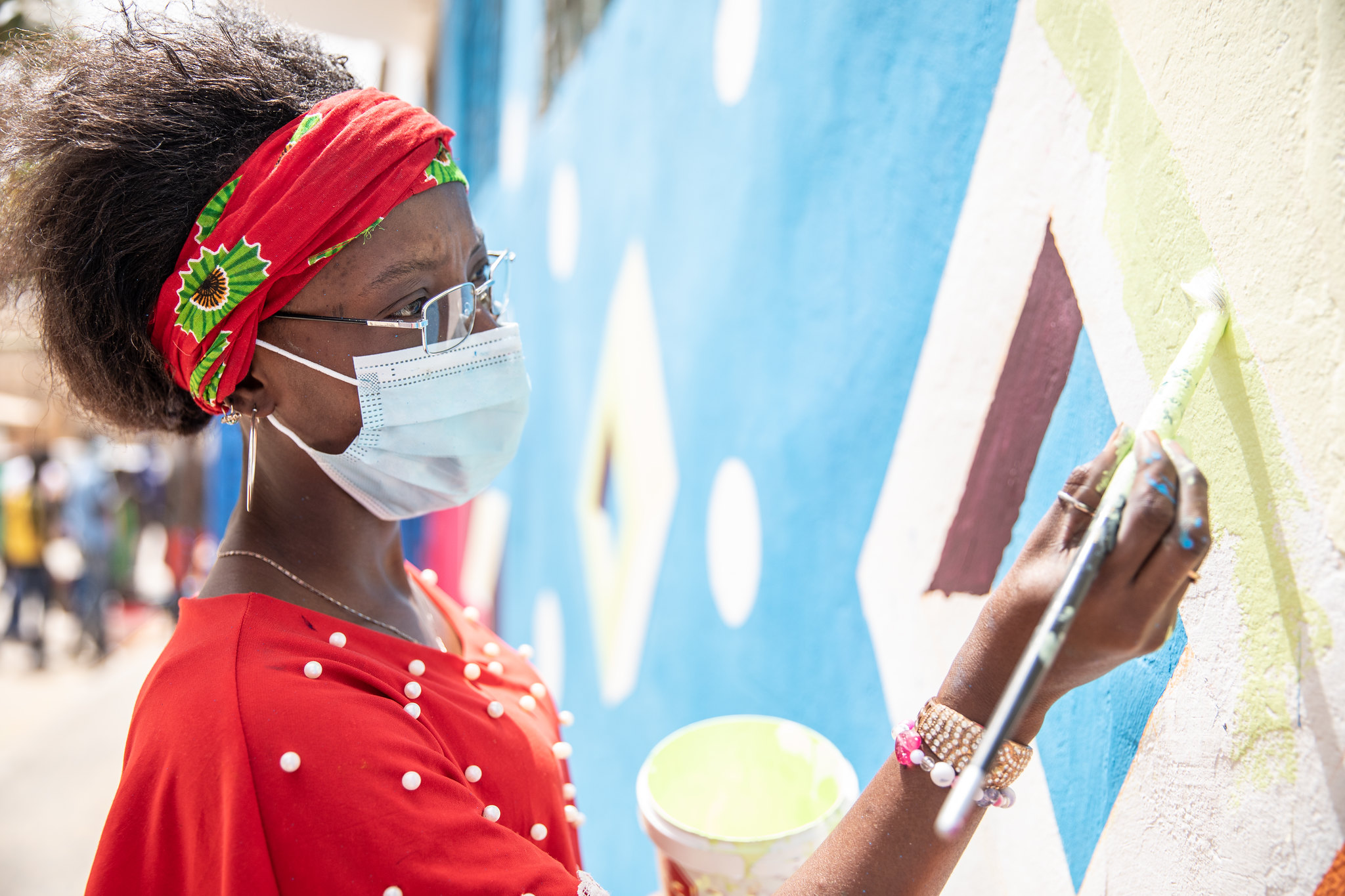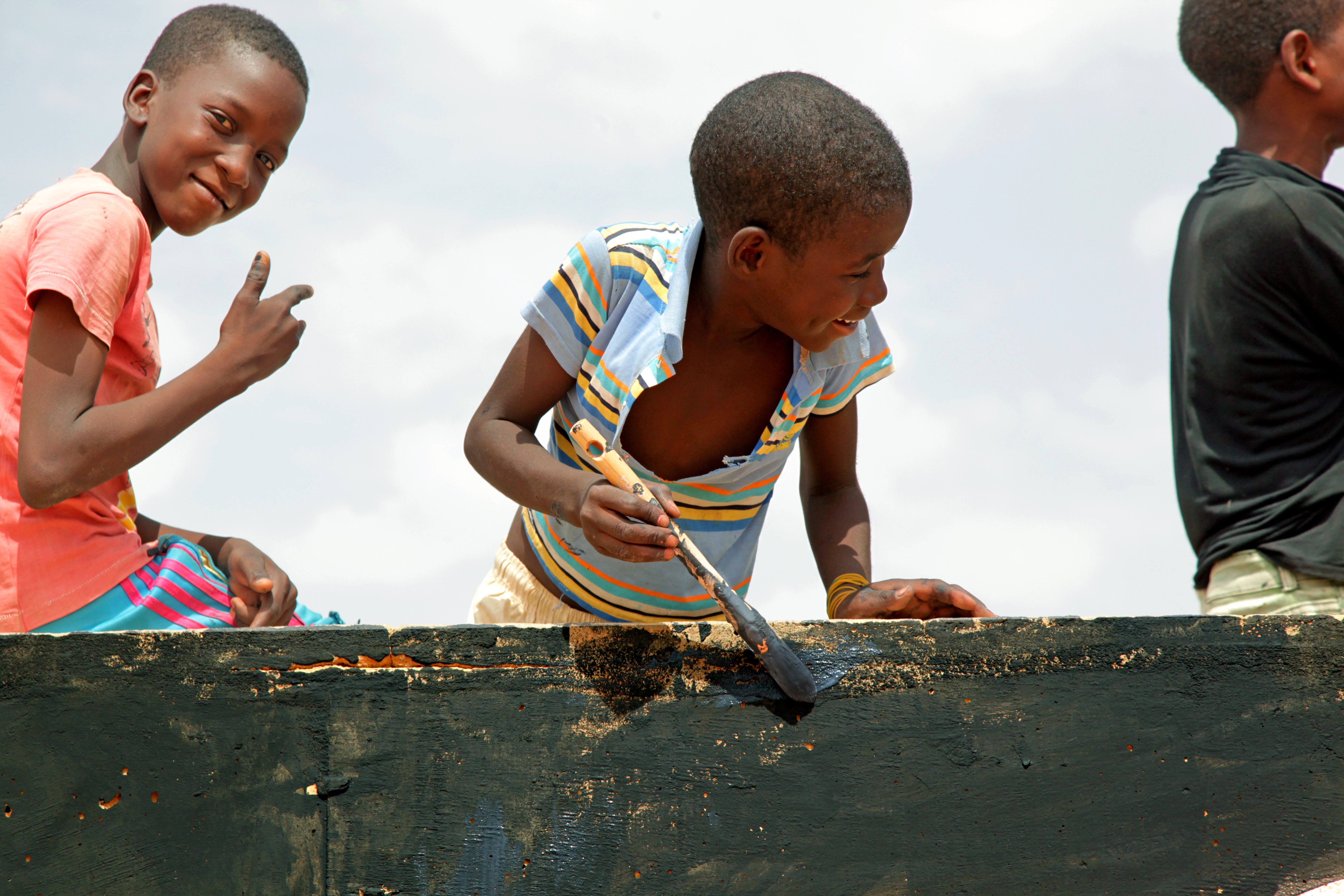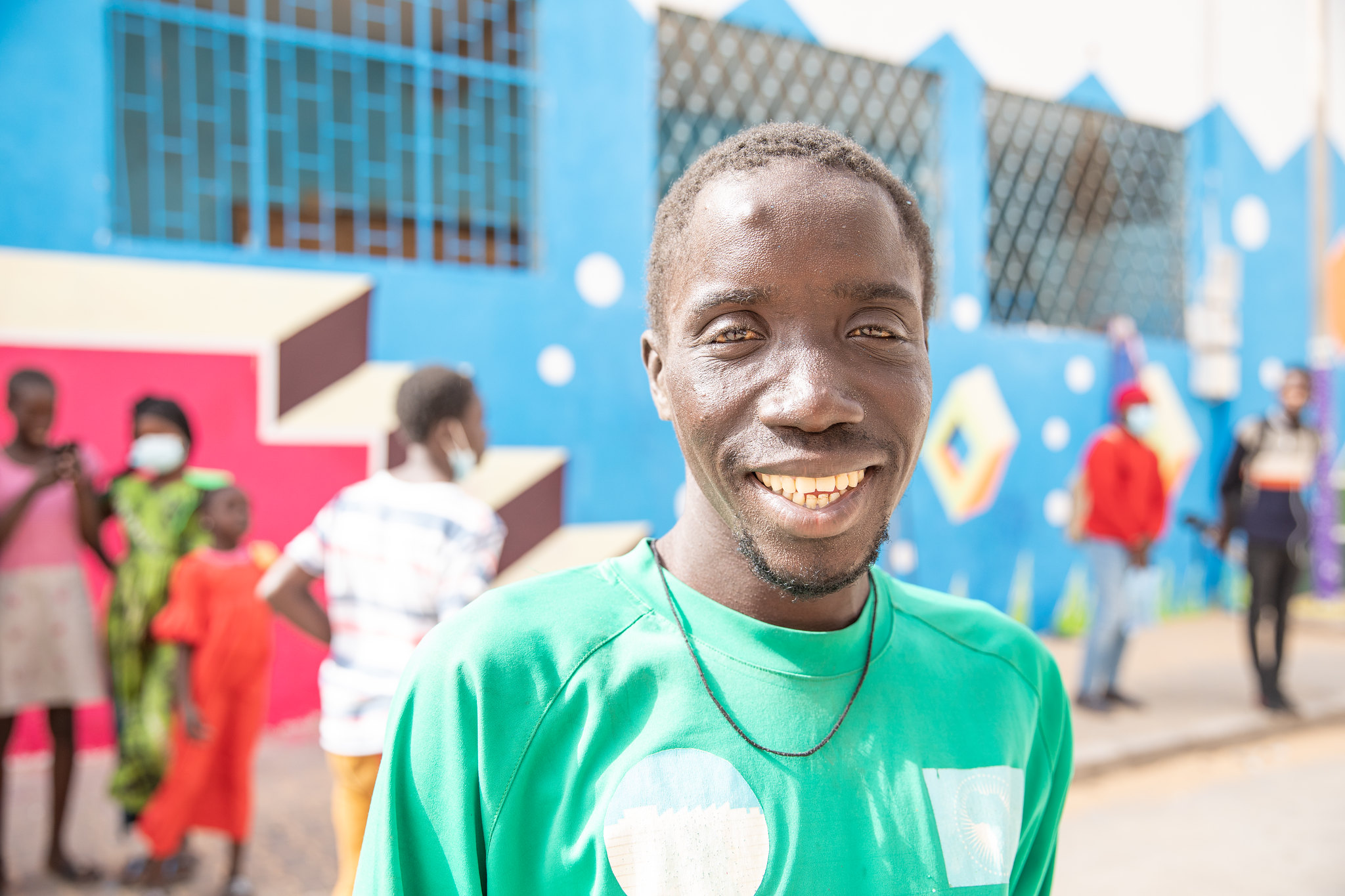Street Art: revamping urban youth participation in West Africa
West Africa
Story
Street Art: revamping urban youth participation in West Africa
 Migrants as Messengers Volunteer paints in Dakar Senegal. Credits: Amanda Nero/IOM
Migrants as Messengers Volunteer paints in Dakar Senegal. Credits: Amanda Nero/IOM
West Africa is a region that urbanizes at a rapid pace. This has an impact on its youth, which became clear during the pandemic when options to meet and interact outdoors decreased. Yet, it’s those young people who should be the drivers behind change and actively participate in shaping their own future.
“Young people are on the frontlines of the struggle to build a better future for all. The COVID-19 pandemic has highlighted the dire need for the kind of transformational change they seek – and young people must be full partners in that effort” says UN Secretary-General António Guterres.
Today, on International Youth Day, we highlight solutions developed by young artists and migrants to address challenges like urbanization. Street Art Together is an awareness raising activity designed for and by young people to meet, socialize, and express themselves in public spaces. Through co-creation, participative street art addresses their needs and challenges while sparking their creativity.
The project, developed by IOM in West and Central Africa and Street Art Sans Frontières is a series of free, participative painting workshops organised in public urban areas and facilitated by local youth, artists and returned migrants. Together with community members and using simple techniques and materials, Street Art Together participants co-create colourful murals that lighten up neglected areas of West African cities. Street Art Together is also a space for young people to interact with their communities on topics like risks of irregular migration and local opportunities, starting in their own neighbourhoods.
The start of a colourful journey
 Children painting a mural in Niamey, Niger. Credits: IOM/Niger
Children painting a mural in Niamey, Niger. Credits: IOM/Niger
In October 2019, prior to the pandemic, IOM Niger launched the pilot phase of the Street Art activities to support the youth and strengthen social cohesion within their communities. A first round of workshops was organized in Niamey and in Agadez. Over four weeks, street artists trained returnees, migrants in transit and local artists in organizing participative street art interventions. Using only locally available materials, such as paint instead of spray cans, and simple, geometric shapes, the teams livened up the streets of Niger with help from curious onlookers.
“It’s nice to see the effect one afternoon can have on people,” said Donald, a migrant in transit from Cameroon. “This may not be my city, but it’s a great opportunity to make it beautiful for others and to create friendships along the way.”
Out of this pilot grew the distinct participative street art methodology, designed to teach anybody, regardless of skill and previous experience, how to become a facilitator of street art activities.
Painting the gender gap
MaM Volunteer turned artist Mariam Camara from Guinea. Credits: IOM/Guinea
The initiative allows participants to exchange views and sometimes change mentalities on migration within their community. Like many concepts in West African societies, certain "migration stereotypes" often remain masculine. In order to denounce this and to allow female points of view enter the collective memory of a community, female volunteers started using Street Art Together as a podium to challenge the minds of their community.
In Guinea, Migrants as Messengers Volunteers and local artists created a colourful mural at a migration centre under the theme “One woman, one image”. With this mural they intend to raise awareness about gender-based violence, and how this can be a push factor for many to pursue irregular migration. it can be manifested during irregular migration journeys.
Volunteer Mariam shared her story hoping it could impact her surroundings. “My experience made me realize that there was a pattern of women being placed in very dangerous positions,” she explains. “Through Street Art Together I am able to create the image of confidence and strength to encourage myself to find joy and happiness in my country and within my community.”
#EveryoneCanPaint
Word travels fast and images even more so. Pictures of the colourful walls, buildings and bridges painted were shared across the region on social media. Everyone can paint is the entry point of the Street Art Together workshop; “I was just passing by when I saw this beautiful artwork in the making. I am a first aid worker, but I happily joined the activity. One would say that this mural is made by artists, but the truth is that it is made by people like me just passing by”", says Abdou from Senegal.
 Abdou from Dakar joined the activity while passing by. Credits: Amanda Nero/IOM
Abdou from Dakar joined the activity while passing by. Credits: Amanda Nero/IOM
The activities conducted in Senegal proved that art is a powerful tool for communication and empowerment. The murals remind the community daily on the importance of listening and being heard.
Moustapha Badiane, a Senegalese painter is happy to share the spotlight with all the people who contributed: “It's not the work of one or more artists, it's the work of a whole community. I think everyone put a little bit of themselves into it, the kids, the girls, the volunteers... everyone is here. It's the work of all of us.”
Mural in Conakry painted by Street Art Together. Credits: IOM/Guinea
Changing Perceptions
From its beginnings, Street Art Together turned city walls into the canvas of creative expression within communities. In The Gambia, workshops were organised inside the Migration Information Centre in Basse, Upper River Region. Aside from being an avenue to build cohesion and collaboration among youth, the workshops resulted in a vibrant, modern, and memorable backdrop for the centre– aimed at attracting young people to maximize engagement within the space.
The painting sessions are a way to bring down barriers and correct harmful misconceptions that might live among them. These changes go beyond the walls.
Fatou Badjie, a returned migrant and survivor of human trafficking, summarise: "Street art is about expressing your emotions...using art.”
#YourStreetArt
What will the rest of 2021 bring for Street Art Together? A new learning portal, Yenna.org, on community engagement, launched on International Youth Day to highlight the power that young people have in effecting positive change in their community. The portal, developed by IOM under the EUTF Joint Initiative, contains digital modules allowing young people and awareness raising practitioners working on migration, to learn and conduct a Street Art Together workshop wherever they seem fit.
IOM is eager to create a network of young people, returnees, and street artists across West and Central Africa, united in their quest to bring important migration messages through their own experience and interpretation.
The walls painted through Street Art Together in Côte d’Ivoire, Ghana, The Gambia, Guinea Bissau, Guinea Conakry, Mauritania, Niger, Senegal and Sierra Leone are a first step in the right direction. Now we’re passing the brush and paint over to youth regionwide to continue the job. Street art can be a way for young people to claim their own “space”, imagine solutions and shape a colourful future.
 Street Art Sans Frontières organised the first activity in Niamey in 2019. Credits: IOM/Niger
Street Art Sans Frontières organised the first activity in Niamey in 2019. Credits: IOM/Niger


